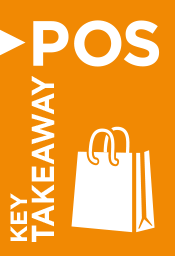The Best Approach to Sustainable Business Growth – Profit-Making vs. Life-Changing
A few days ago, I came across an article that caught my attention: “Profit’s Not the Only Thing”. And that’s true: profit isn’t the only thing that matters in business; achieving long-term, sustainable growth is equally important.
Why? In essence, because sustainable business growth is among the few elements that can sustain a company over the long term.
So, sustainable growth is key to gaining real business success. But what does it mean? More importantly, how can a retailer or brand achieve it?
Although the most obvious answer is, “by increasing sales revenue”, revenue and profit are just two elements of the sustainable-growth equation; another important aspect is the value a retailer or brand adds to the customer journey.
Here, however, I’m not talking only about improving customers’ experience but also about creating life-changing value. The life-changing value retailers and brands add to their products and services is what makes their businesses famous and successful.
For those who don’t know where to start, Simon Sinek provides some great ideas in “The Golden Circle”, indicating what needs to be done in order to offer life-changing value to customers and achieve sustainable business growth, implicitly.
According to Simon Sinek, all the companies know what they do; but “only a few of them know why they do what they do”.
Here, “why” isn’t necessarily about profit, as profit is an inherent element of business; it’s more about the authentic purpose of what we do. In other words, profit shouldn’t be the primary purpose of a business but rather the result of pursuing authentic purposes. To achieve sustainable growth, this concept should guide every aspect of a business, from recruitment to product development, sales and customer management.
Unlike most companies that typically start with “what”, big players like Microsoft, Amazon and Apple start with “why”.
When a company provides an amazing product or service that defies all of our assumption for what’s possible, that product or service will stand the test of time. As an example, about 75 percent of Microsoft’s profits come from the Windows OS and Office productivity suite, launched in 1980s and 1990s.
Another great example comes from Amazon, which despite its scale “still thinks and acts like a startup”, according to Jeff Bezos, founder and CEO. Focusing on sustainable growth, Amazon continues to improve the customer experience by coming up with unexpected offerings. In addition to the wide range of products it provides, for instance, Amazon makes available unique services like Amazon Prime, which combines fast shipping with exclusive access to movies, TV shows, music, Kindle books and unlimited photo storage.
Starting with “why”, therefore, involves “challenging the status quo, thinking differently”, as Simon Sinek said, and taking business decisions that can change lives, I would add.
Challenging the status quo—or the caveman thinking, defined by Forbes as a “primitive, simplistic set of processes still hard-wired into all our brains”—can help you come up with new, interesting ideas and transform them into unique products that exceed everyone’s expectations, including yours. But challenging the status quo also means re-examining your sense of purpose and making sure your company serves it well.

Key takeaway: At the end of the day, challenging the status quo is all about “suspending our agendas”, as Leon Edwards said, and turning the customer, his wants and needs into the authentic purpose and core belief of our businesses; in other words, turning the customer into the real reason why we do what we do. Doing all these will allow for a more consistent business direction, continuous, pragmatic innovation, employee engagement and retention, and last, but not least, increased customer satisfaction and loyalty.
[fl_builder_insert_layout id=2177]